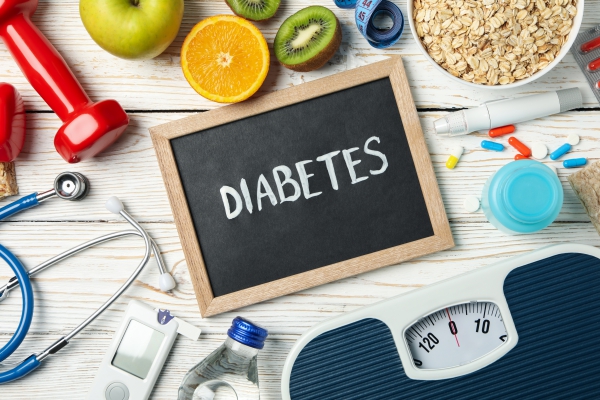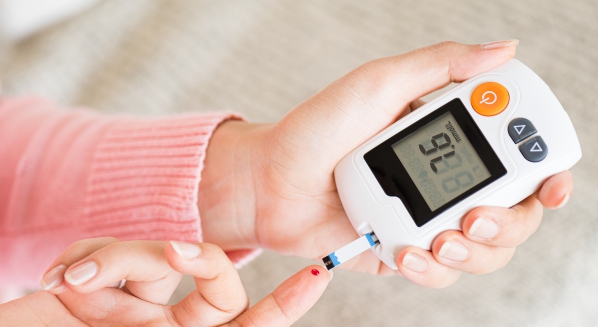What is Type 1 diabetes mellitus?
Type 1 diabetes mellitus (T1DM) is a chronic condition that occurs most commonly in childhood although it can occur at any age. It is due to the body’s inability to produce insulin which is a hormone responsible for the regulation of blood sugar levels. This results from the destruction of beta cell which are found in the pancreas. These cells produce insulin in response to an increase in sugar levels in the blood.
This condition is autoimmune, that means that it is your body itself which destroys the beta cells. In contrast to people with type 2 diabetes mellitus, those with T1DM are usually lean and they depend on insulin injections as from the diagnosis is made. The Centers for Disease Control and Prevention (CDC) found that around 1 million of United States residents had T1DM in 2011. Approximately 1 in every 400-600 children and adolescents have T1DM. Around the world, it has been observed that more and more people are having the disease.
There is no cure for T1DM. However, people with the disease can have a normal life with regular insulin injection. The treatment for T1DM is lifelong.
Causes of Type 1 diabetes mellitus
The exact cause of T1DM is unknown. What is known is that it is an autoimmune condition whereby your own body attack your pancreas.

When you eat, your level of sugar rises in your blood. This stimulates your pancreas-which is a gland located in your abdomen- to secrete insulin. It is secreted from specific cells called beta cells. The role of insulin is to regulate the amount of sugar in the bloodstream by increasing the uptake of sugar by other cells in the body.
In T1DM, your body makes antibodies which attack beta cells in your pancreas. Therefore, your pancreas is no longer able to produce insulin. This results in a build-up of sugar in the bloodstream.
Genetics has a big role to play in T1DM. Studies have shown that there are certain genes that may be responsible for the development of T1DM.
Some environmental factors such as infections with certain viruses (enterovirus, mumps, rubella, coxsackievirus B4) can also trigger the autoimmune destruction of beta cells.
Risk factors
There are certain factors that may increase your risk of having T1DM. These include:
- Having another autoimmune disease such as Grave’s disease, Addison’s disease or Hashimoto thyroiditis
- Having a family history of T1DM
- Having certain genes which are associated with T1DM
- Being aged between 4 to 14 years old
Signs and symptoms of Type 1 diabetes mellitus
T1DM can present with a variety of signs and symptoms including:

- Frequent urination
- Excessive thirst
- Excessive hunger
- Decreased energy
- Nausea
- Blurry vision
- Weakness
- Muscle cramps
- Weight loss
In certain cases, people with T1DM can present as an emergency called diabetic ketoacidosis (DKA). This is a life-threatening complication of T1DM in which blood sugar levels increase at high levels. The liver breaks down fat into a product called ketone which makes the blood acidic. DKA is a common first presentation whereby the diagnosis of T1DM is made. It may be triggered by an infection or stress. The signs and symptoms of DKA are:
- Confusion
- Deep and rapid breathing
- Dry skin and mouth
- Fruity-smelling breath
- Headache
- Abdominal pain
- Nausea and vomiting
As mentioned earlier, it is an emergency and requires immediate treatment by a healthcare professional as it can be life-threatening.
Making a diagnosis
Blood tests are used to make the diagnosis of T1DM. These include:
- Random blood sugar: This involves taking a sample of blood at any random moment to check for the blood sugar level. If the value is equal to or higher than 200 mg/dl (11.1 mmol/l) this means that you have diabetes.
- Fasting blood sugar: Before taking a blood sample from you, you will be required to keep fasting overnight. If the fasting blood sugar is less than 100 mg/dl (5.6 mmol/l) it is considered normal. If it is between 100 to 125 mg/dl (5.6 to 6.9 mmol/l), it is said that you are pre-diabetic. If the value is 126 mg/dl (7 mmol/l) or above, on 2 different occasions, the diagnosis of diabetes is made.
- Glycated hemoglobin (A1C) test: This value illustrates the average on your blood sugar levels for the past 3 months. It also reveals how well your blood sugar levels have been under control. If it is 6.5% or greater on 2 different occasions, you have diabetes.
- Blood ketones: This test involves the measurement of the level of ketones in the blood. This can help in making the diagnosis of DKA.

Treatment of Type 1 diabetes mellitus
T1DM requires lifelong insulin treatment. Allfollowing are important in the management of T1DM:
- Tight glycemic control: This is important to prevent the appearance of complications linked to T1DM. This can be achieved through follow ups and glycated hemoglobin (A1C) tests on a regular basis.
- Self-monitoring of glucose levels: Optimal control of your blood sugar levels is achieved through frequent self-monitoring of blood glucose levels. This allows proper adjustments in your insulin doses. If you have T1DM, it is important for you to learn how to measure your own blood sugar levels using a glucometer. It is recommended for you to check your blood sugar level before eating, in some cases 1-2 hours after eating, and before going to bed.
- Insulin therapy: There are several types of insulin available: rapid-, short-, intermediate-, and long-acting insulin. They differ by their time taken to act and their duration of action. Examples of rapid-acting insulin include glulisine, lispro and aspart. Short-acting insulins include Humulin R and Novolin R. An example of intermediate-acting insulin is NPH. Long-acting insulins include detemir and degludec. The only possible ways to administer insulin are injections or insulin pumps.
Injections: Using a fine needle and a syringe, you can inject insulin in your arm, abdomen or thigh. Your doctor will prescribe you the type and dose of insulin required for you. - Insulin pump: This is a device that must be worn and whose function is to automatically inject specific amounts of insulin in your body. It acts as a pancreas in the way it releases insulin with respect to your meals.
- Diet: It is important for you to learn how to adjust the timing, size, frequency and composition of your meals depending on your blood sugar levels to avoid complications such as too low or too high blood sugar levels. It is also advised to learn how to count calories and how to split them in different meals of the day.
- Physical activity: people with T1DM are encouraged to exercise regularly. However, proper monitoring is required to prevent a drastic decrease in your blood sugar levels. Adequate water intake is advised during physical activity.


Complications
Some complications of T1DM include:
- Diabetic ketoacidosis (DKA): This is a medical emergency whereby the blood sugar levels increase to life-threatening levels. If you experience the signs and symptoms of DKA, you should seek medical help immediately without any delay.
- Hypoglycaemia: This is when your blood sugar levels drop below normal. This may arise from skipping meals, vigorous exercise or injecting too much insulin.
- Infections: High blood sugar levels make you more prone to having infections.
- Eye problems: Diabetes is known to affect the eyes. Tight control of your blood sugar levels can significantly decrease the risk.
- Kidney problems: Similarly, long standing high blood sugar levels can affect your kidneys.
- Diabetic neuropathy: This is when diabetes affects your nerves and leads to a decreased sensation in your limbs.
- Diabetic foot disease: People with diabetes are more likely to have foot ulcers or infections. Furthermore, their wounds take more time to heal. This can lead to amputations if not managed on time and properly.
Prevention
There is currently no way to prevent T1DM. However, prevention of its complications can be achieved by strict control of blood sugar levels.
Prognosis

Above 60% of people with T1DM do not develop severe complications in the long run, while others may end up being blind or with end stage renal disease. The risk of complications is higher among men compared to women. Factors that highly affect the course of the disease in everyone include patient’s education, awareness of the disease and motivation to stick to the prescribed regimen and advice.
Source:
Medscape. 2020. Type 1 Diabetes Mellitus.
Parveen, K. and Michael, C., 2017. Kumar & Clark's Clinical Medicine. 9th ed. The Netherlands: ELSEVIER.



